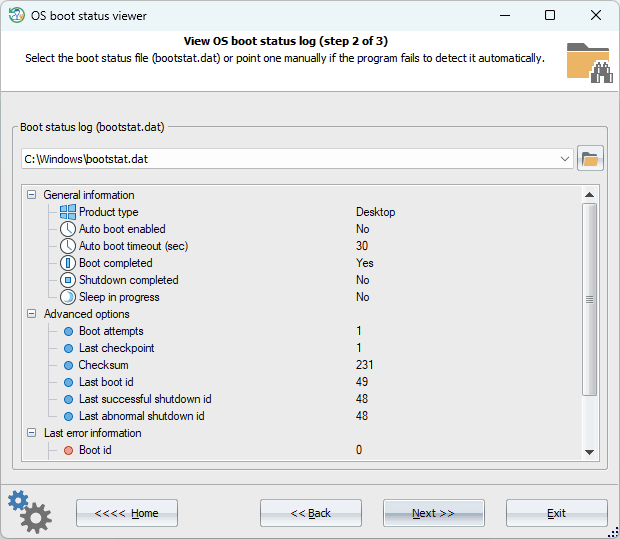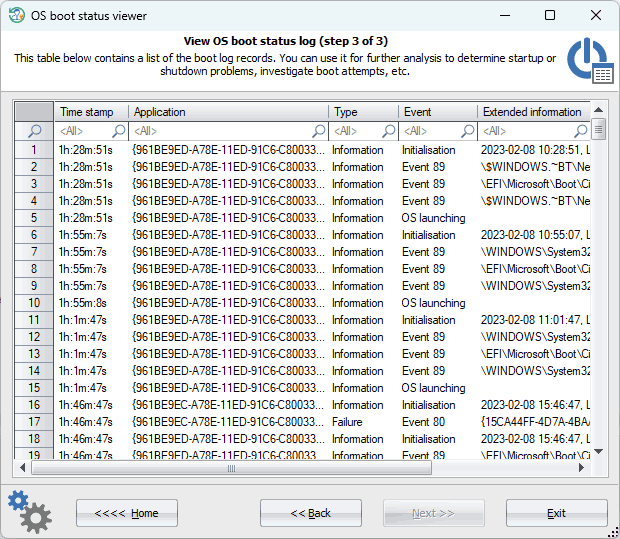Reset Windows Password: boot status explorer
The boot status explorer is a tool that monitors the boot process and detects any problems that may occur during startup. By analyzing the bootstat.dat file, the tool can extract information related to the boot process stored by Windows Boot Manager, such as the previous boot sequence, the last successful boot, and any previous failed attempts.
This tool is particularly useful when trying to identify the cause of boot failures, such as unexpected shutdowns or crashes. If Windows fails to start up properly, the Boot status explorer can help pinpoint the problem and provide guidance on how to resolve it.
Selecting the bootstat.dat file

The bootstat.dat file can be found either in the Windows directory or the EFI boot partition, which is typically hidden in Windows. If any hidden partitions are detected, the program will prompt the user to scan them for the bootstat.dat file.
View boot status

The boot status log consists of event records. Every record describes an event related to the boot process in Windows and contains the following fields:
- Time stamp - BIOS time (in seconds) from the beginning of the day. In Windows 10 and higher OSes this value may be cropped
- Application - GUID of the source application.
- Type - record type. For example, error, warning, or information.
- Event - event ID. Some event IDs are unknown.
- Extended info - additional information about event.